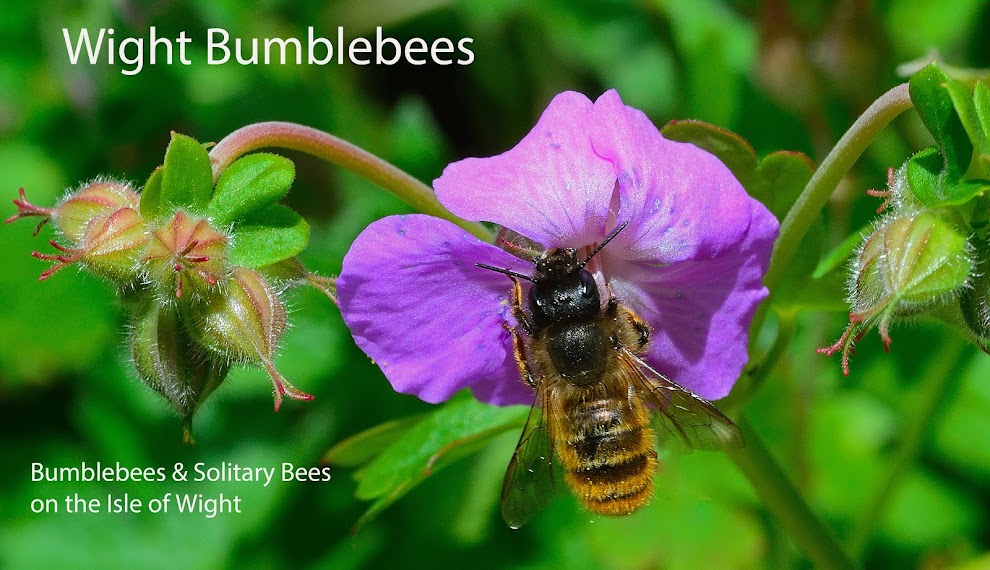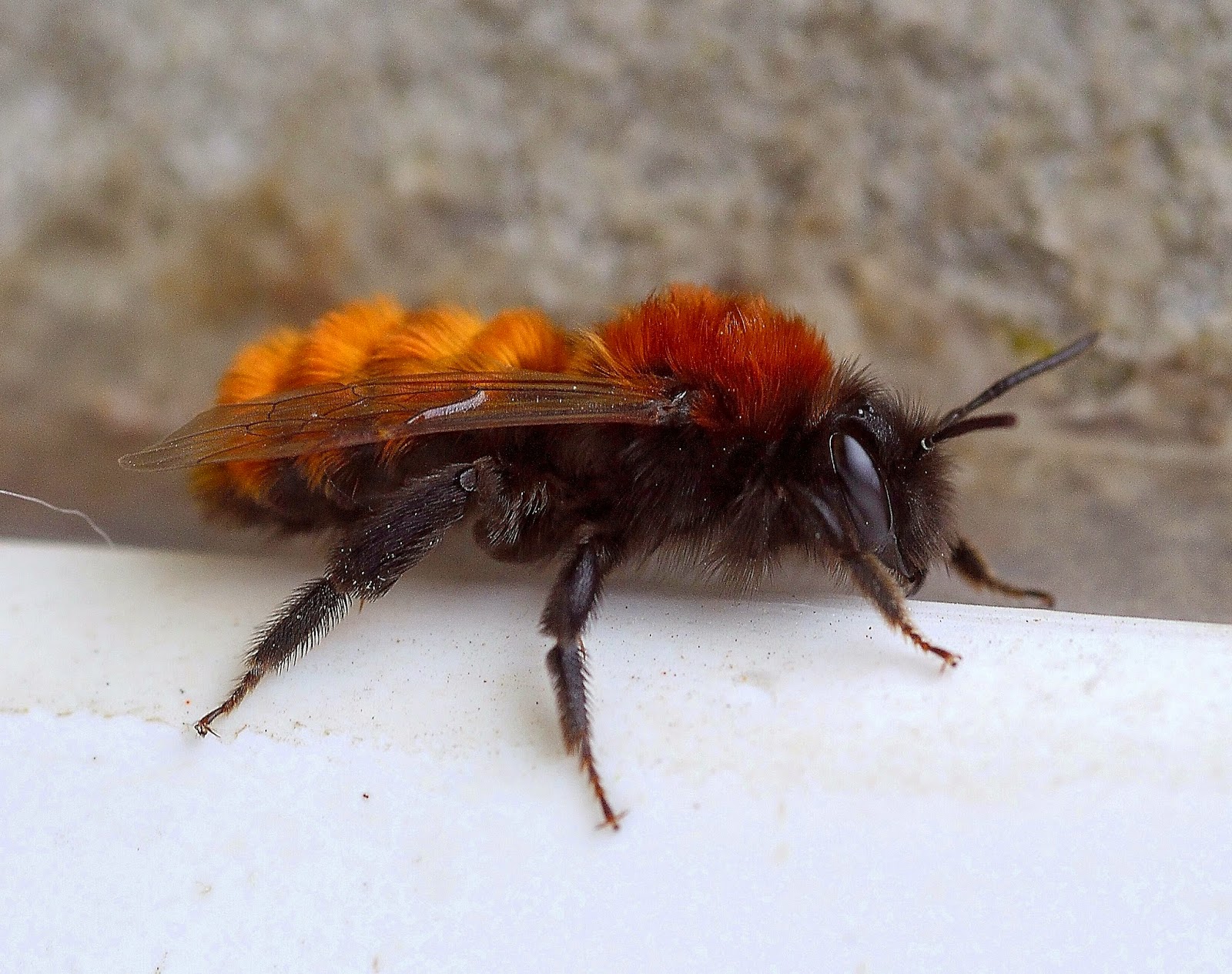The Garden Bumblebee.Bombus hortorum is a common bumblebee and I see it at this time of year in my garden.However this particular bee pictured below was discovered in my local copse feeding on Bugle flowers.This species has a very long tongue and prefers flowers with deep tubes.
Perhaps the best way to distinguish between B. hortorum and other species with similar banding,such as the Heath Bumblebee,is the shape of the face which is distinctly long in the case of B. hortorum.


















